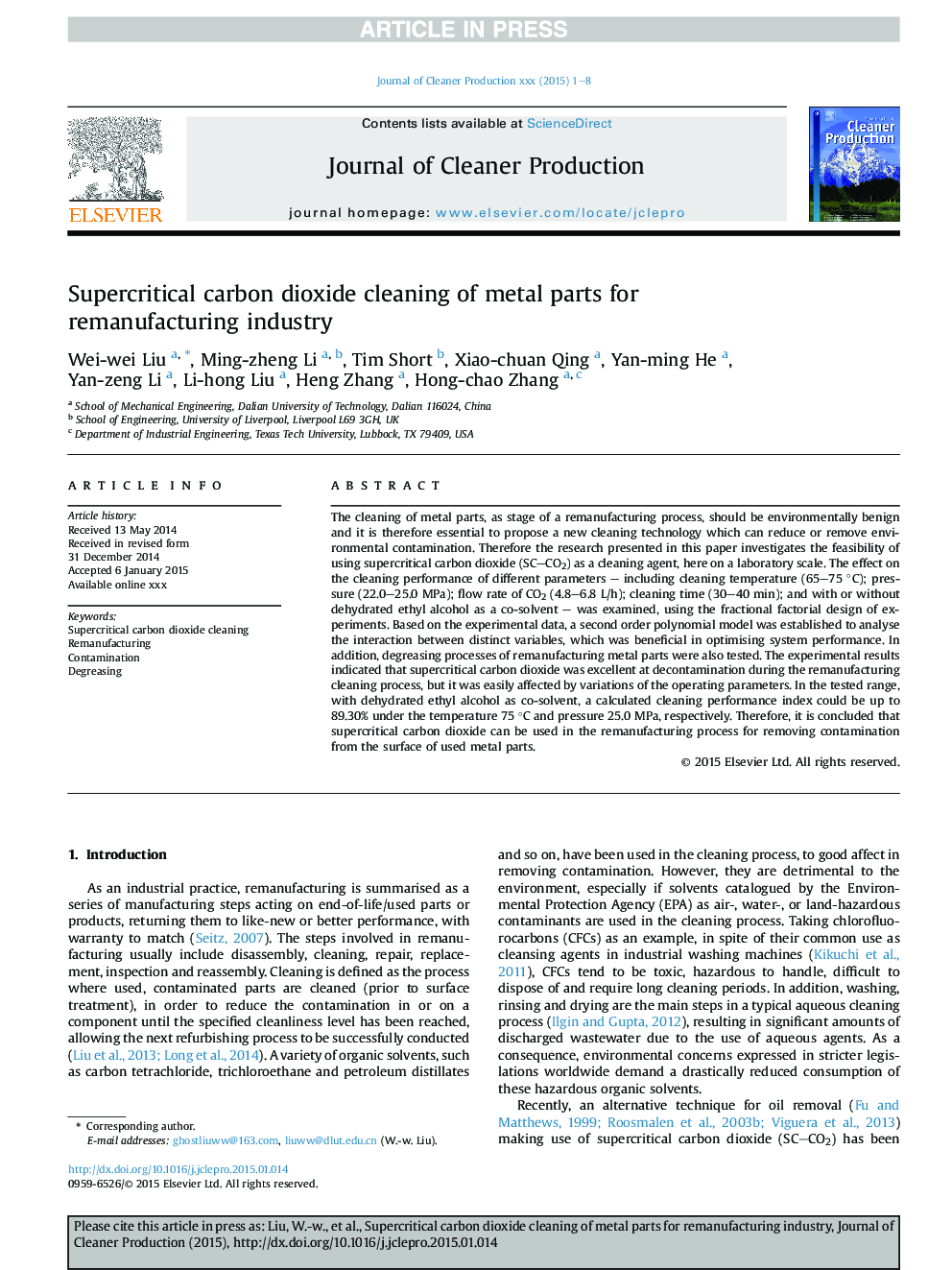| Article ID | Journal | Published Year | Pages | File Type |
|---|---|---|---|---|
| 8104849 | Journal of Cleaner Production | 2015 | 8 Pages |
Abstract
The cleaning of metal parts, as stage of a remanufacturing process, should be environmentally benign and it is therefore essential to propose a new cleaning technology which can reduce or remove environmental contamination. Therefore the research presented in this paper investigates the feasibility of using supercritical carbon dioxide (SC-CO2) as a cleaning agent, here on a laboratory scale. The effect on the cleaning performance of different parameters - including cleaning temperature (65-75 °C); pressure (22.0-25.0 MPa); flow rate of CO2 (4.8-6.8 L/h); cleaning time (30-40 min); and with or without dehydrated ethyl alcohol as a co-solvent - was examined, using the fractional factorial design of experiments. Based on the experimental data, a second order polynomial model was established to analyse the interaction between distinct variables, which was beneficial in optimising system performance. In addition, degreasing processes of remanufacturing metal parts were also tested. The experimental results indicated that supercritical carbon dioxide was excellent at decontamination during the remanufacturing cleaning process, but it was easily affected by variations of the operating parameters. In the tested range, with dehydrated ethyl alcohol as co-solvent, a calculated cleaning performance index could be up to 89.30% under the temperature 75 °C and pressure 25.0 MPa, respectively. Therefore, it is concluded that supercritical carbon dioxide can be used in the remanufacturing process for removing contamination from the surface of used metal parts.
Related Topics
Physical Sciences and Engineering
Energy
Renewable Energy, Sustainability and the Environment
Authors
Wei-wei Liu, Ming-zheng Li, Tim Short, Xiao-chuan Qing, Yan-ming He, Yan-zeng Li, Li-hong Liu, Heng Zhang, Hong-chao Zhang,
